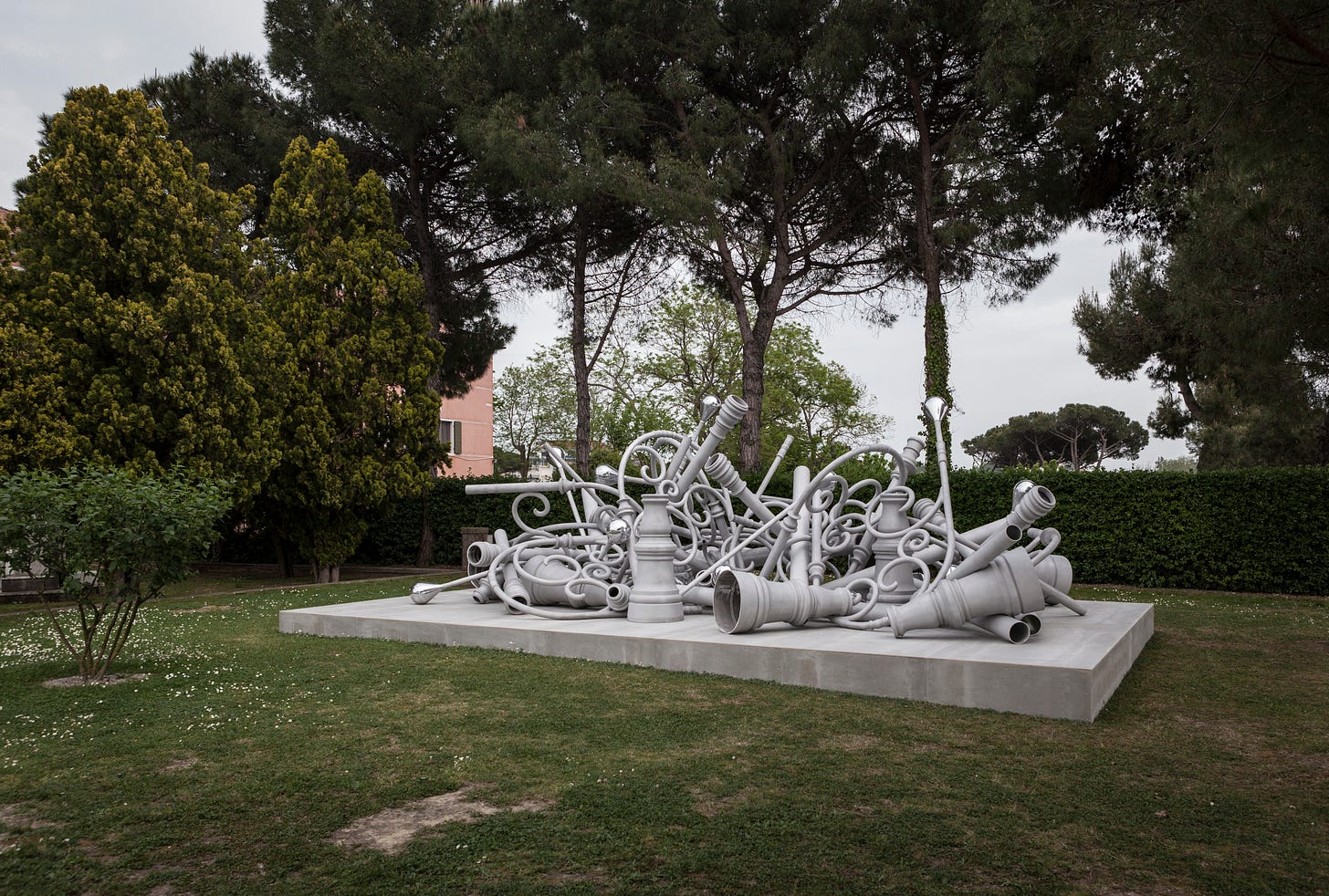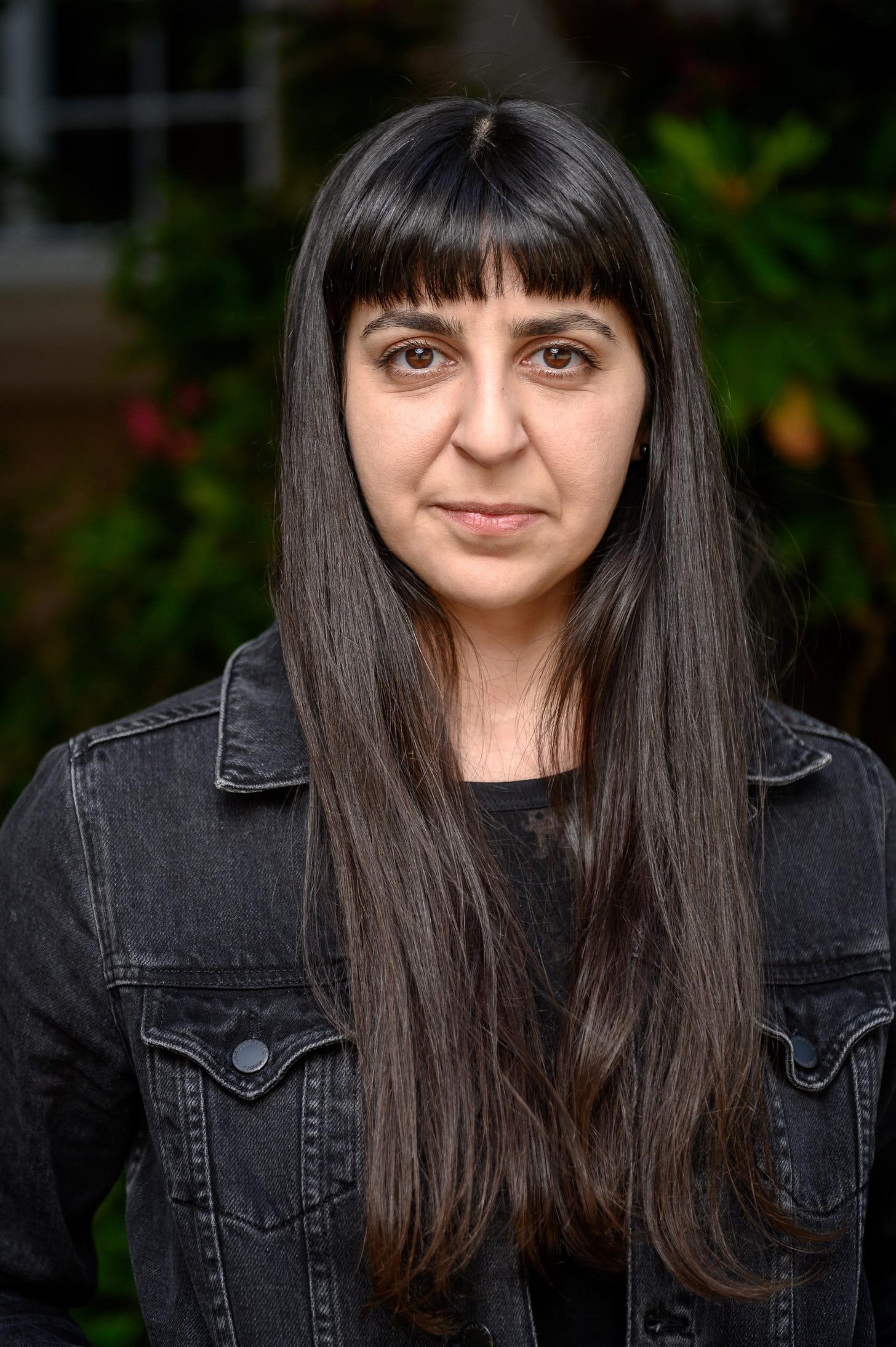Misremembering Wrongdoing: The Case of Genocide Denialism
Melanie Altanian (University of Freiburg)
In 2005, the Geneva administrative council approved the idea of building a monument for the victims of the Armenian genocide of 1915–1917. It did not take long for the decision to be met with opposition from local Turkish associations and other officials who bowed to diplomatic pressures from the Turkish government. The Turkish Republic, heir to the Ottoman Empire, has been denying its foundational crime for over a century.
Despite these obstructions, the City of Geneva, together with the Municipal Fund for Contemporary Art (FMAC), carried on with their plans. By the end of 2010, the FMAC selected “Les Réverbères de la Mémoire”, a series of streetlights designed by French-Armenian artist Melik Ohanian. Yet, it would be almost a decade before the monument was finally unveiled at the Parc Trembley on April 14, 2018. In the meantime, the disassembled monument “in progress” was realized as part of the Armenian Pavilion at the 2015 Venice Art Biennale, “Armenity”, which was awarded the Golden Lion for Best National Participation.
Building monuments is merely one form of repair after genocide. The more general point to make here is that the oppositional claims of Turkish authorities or officials to any repair efforts related to the Armenian genocide are repeated like clockwork. They are considered as a big, dangerous mistake, insulting to Turks, stirring up inter-communal conflict, and in any case, only representing “the Armenian view of history.”
Besides the threatening undertones of these oppositional claims, these repair efforts are misconstrued as violence against Turkey, its institutions, and its people, in an ultimate act of ethical and epistemic perversion. This is where my research comes in: it examines the epistemic harmfulness of genocide denialism and its concomitant distortions and rationalizations. Broadly speaking, epistemic harms are harms that relate to our capabilities of generating and sharing knowledge and understanding.
It seems commonly understood that genocide denial violates the dignity of victims and constitutes an assault on truth and memory. This sparked my interest, leading me to ask: how are these dimensions of harm interrelated?
Could there be “epistemic assaults” on truthful memory that violate the dignity of genocide survivors and their descendants?
In my recently published book, I develop the argument that genocide denialism constitutes epistemic oppression of genocide survivors and descendants. Importantly, my concern here is with cases of systematic denial, in short denialism, and not mere instances of denial. It is only when genocide denial is systematic and institutionalized that it becomes a matter of epistemic oppression. The Turkish denialism of the Armenian genocide is a case in point. Sociologist Stanley Cohen even described it as the “most consistent, strident and elaborate state-organized attempt to conceal a record of past atrocities.”
One domain in which I examine issues of epistemic oppression through genocide denialism is that of genocide mis/remembrance. Doing so demonstrates the social dependency of our knowledge practices. It sheds light on the social and political conditions required for successful remembrance of wrongdoing and the biographical testimony it gives rise to. I briefly outline this in the following.
Epistemic oppression refers to unwarranted institutionalized constraints imposed on the epistemic agency of members of a particular social group.
Epistemic agency involves the ability to generate, effectively use, and potentially revise the resources through which we know or make sense of things. Two crucial theses underlie accounts of epistemic oppression: the situatedness and interdependence of knowers.
Situatedness refers roughly to the idea that our lived experience and social position impacts the development of particular habits of attention and concern. They influence what one is likely to notice and pursue as an object of knowledge. Applied to a post-genocidal context, this means that those dominantly situated – descendants of the perpetrator group – tend not to have an interest in pursuing the subject of genocide, or develop a habit of avoiding, denying, and distorting it, thus protecting their privileges.
In turn, genocide survivors and descendants, owing to their social position and experiences of oppressive harms, are more likely to notice discursive distortions of social/material reality and inaccuracies in the dominant understanding on the topic of genocide. They also tend to have an interest in pursuing personal-historical and social-historical truth.
Interdependence refers roughly to the idea that the resources with which we know or make sense of our experience, such as language, concepts, and criteria, are collectively produced and we rely on one another to recognize and enforce them. In a post-genocidal context, and moreover, one imbued by a culture of denial, the concept of genocide is calibrated to the world as experienced by the dominant group. Such actual usage can differ from its formal definition set forth and internationally ratified by the UN Genocide Convention. I elaborate on this in the following and explain its epistemically harmful implications for genocide survivors and descendants.
We can trace the connection between genocide denialism, misremembrance, and epistemic oppression by looking at how genocide denialism distorts the resources required for making sense of past wrongdoing.
Among other distortions, genocide denialism introduces various partial or problematic conceptualizations of genocide into everyday discourse.
Here are two common examples of such conceptual distortions found in Armenian genocide denialism.
The first example is the misrepresentation of the historical context in which the concept was created. Raphael Lemkin coined the term “genocide” in 1944, but had been trying to introduce legal safeguards around the phenomenon since the 1930s. He was concerned about the impunity that characterized the Ottoman crimes and was convinced of the need for legislation that could hold states accountable for what was already conceived of as a crime against humanity and civilization.
His concern for a legal codification of genocide was also bolstered when he witnessed the trial of Soghomon Tehlirian, who, in 1921, assassinated the “architect of the genocide” Talaat Pasha in Berlin. This convinced him further that perpetrators of genocide should be prosecuted by courts, not individuals.
Armenian genocide deniers tie the development of the concept only to the Holocaust. In doing so, they wilfully occlude relevant historical knowledge, alleging that the concept does not apply to the destruction of the Armenian people.
The second example is the partial conceptualization of genocide as physical extermination, massacre, or mass killing. This invites a focus on “body counts” and demographic statistics, supporting deniers in their efforts to downplay the scope of the harms. It allows them to frame what happened as a civil war with “mutual massacres.”
However, various forms of violence are mobilized during genocide. In the case of the Armenian genocide, these included (1) gender-based violence through abductions, rape, and forced marriage, (2) material dispossession and the destruction of the group’s economic foundation, (3) attempted intergenerational erasure through forced assimilation (e.g., the Turkification and Islamization of Armenian orphans), and (4) the destruction or appropriation of cultural assets.
A narrow focus on massacres neglects the perspective of survivors, who will have to live with the genocide’s immediate and long-term consequences.
Neglecting these forms of genocidal violence thus renders survivors and descendants invisible, and thereby also their legitimate and varied claims to justice and repair. This is particularly significant for those who were already in positions of heightened vulnerability, such as children and women. By centring survivors and their descendants, we can appreciate the harms that come from constraining conditions of genocide remembrance.

Such conceptual distortions constrain the epistemic agency of genocide survivors and descendants, particularly their participation in the relevant meaning-making practices, that is, the collective endeavour of giving meaning to past wrongdoing.
The fact that genocide remembrance involves interpretation and reconstruction does not imply memory arbitrariness. It urges us to reflect on the criteria, presumptions, and normative commitments of reconstruction. Successful remembrance depends on adequate epistemic resources provided by our social environment. This is why introducing distorted definitions of genocide into everyday discourse is a crucial way to prevent genocide survivors and descendants from employing the concept.
The social implementation of conceptual distortions characteristic of genocide denialism is intended to silence survivors and descendants by distorting their accounts of their own past.
This can result in the internalization of distorted narratives (for example, narratives of victim-blaming, or victim-perpetrator reversals), constraining their ability to understand their past and present experiences of oppressive harm. However, for those who can resist such internalization, genocide denialism constrains their ability of genocide testimony, as I argue more fully in Chapter 5 of my book.
By drawing on crucial work in critical political epistemology, this book contributes a new philosophical perspective to scholarship on genocide and historical injustice. It also contributes an underexplored case study to illuminate the workings of epistemic injustice and epistemologies of ignorance, shifting our attention to a neglected geographical region.
I hope it will be a helpful resource for genocide survivors and descendants as they resist ongoing rationalizations and attempted justifications of their suffering. It has certainly helped me in my attempts to make sense of what appears to be utterly senseless: both genocide and denialism.



